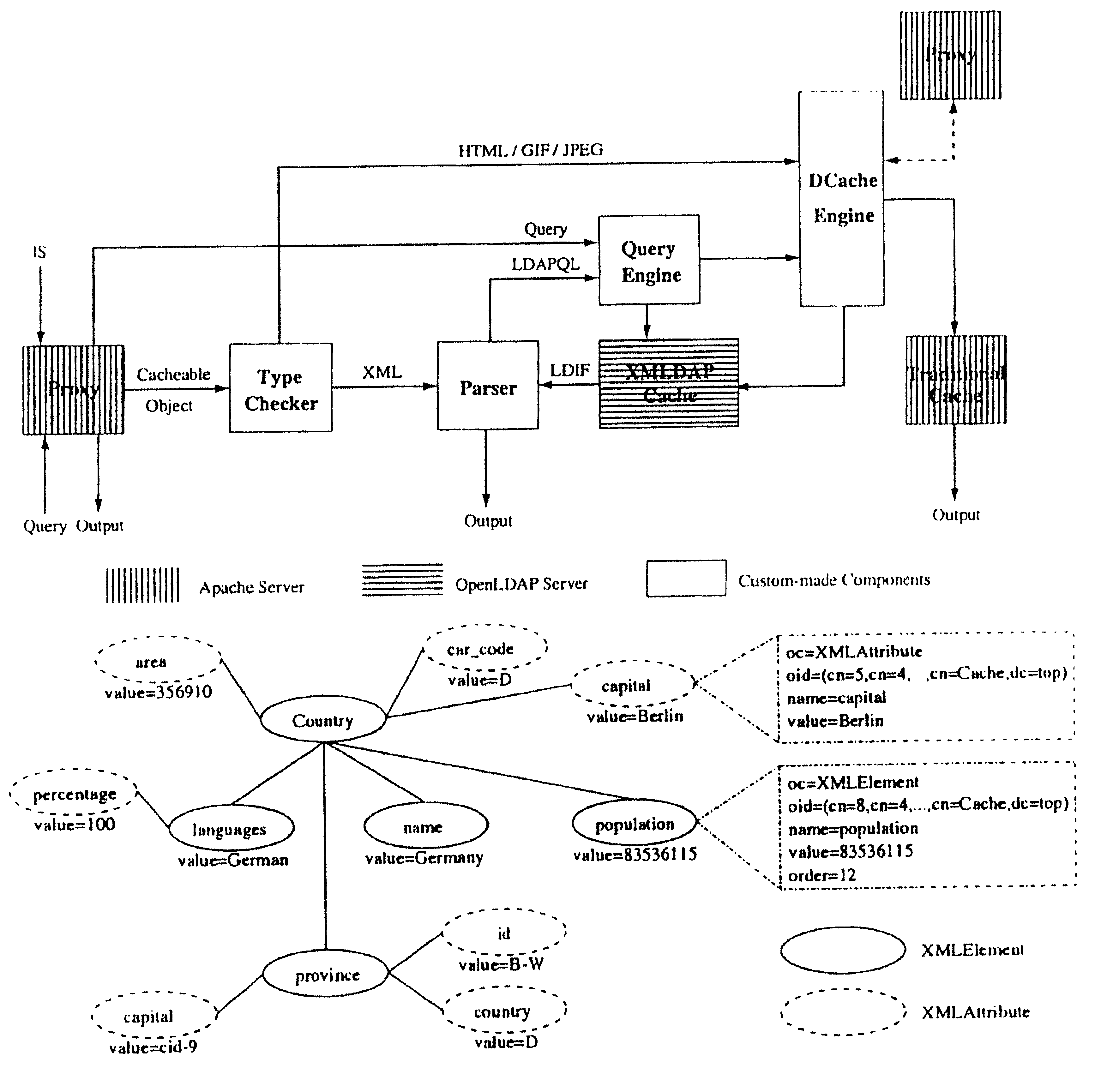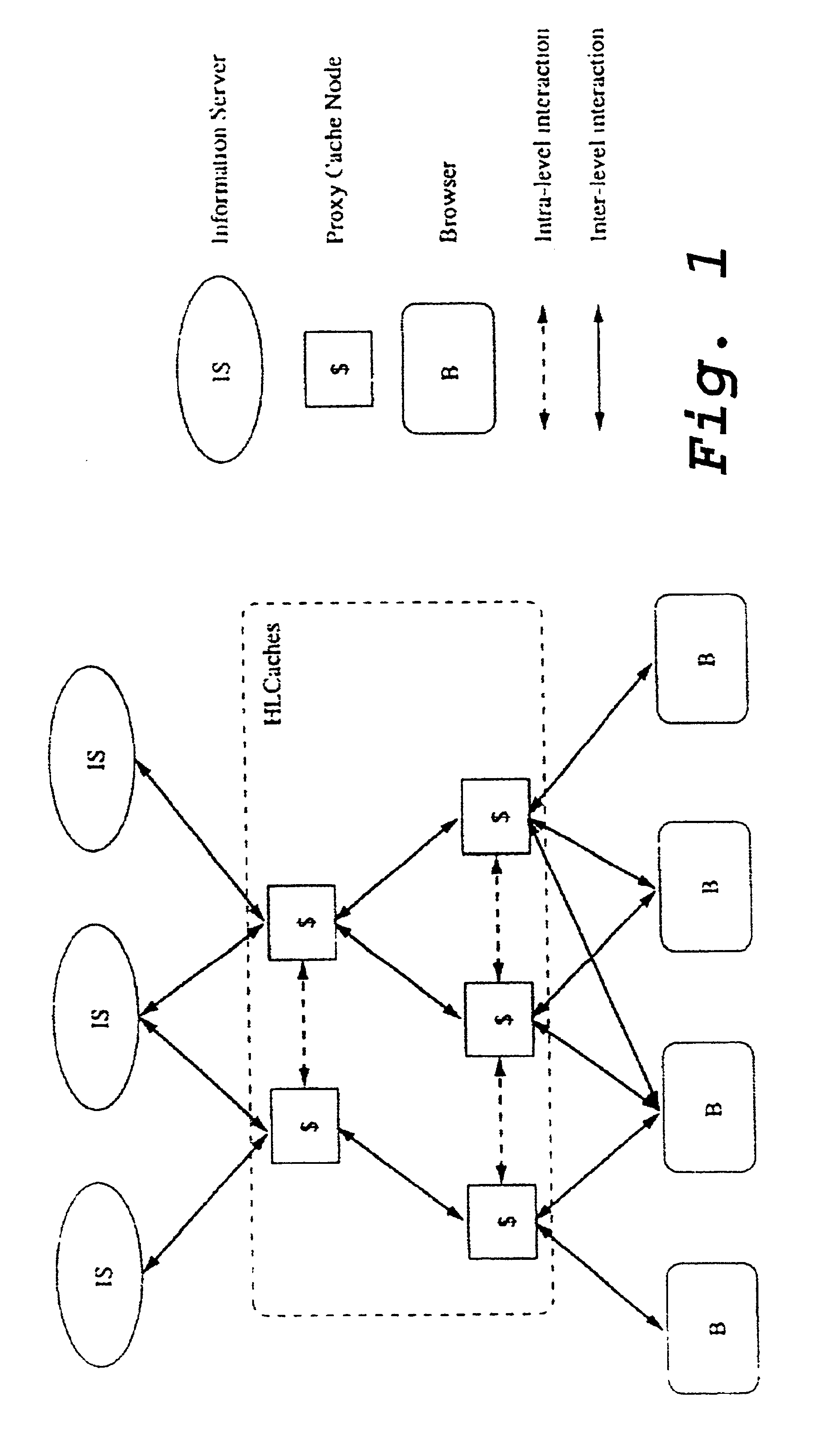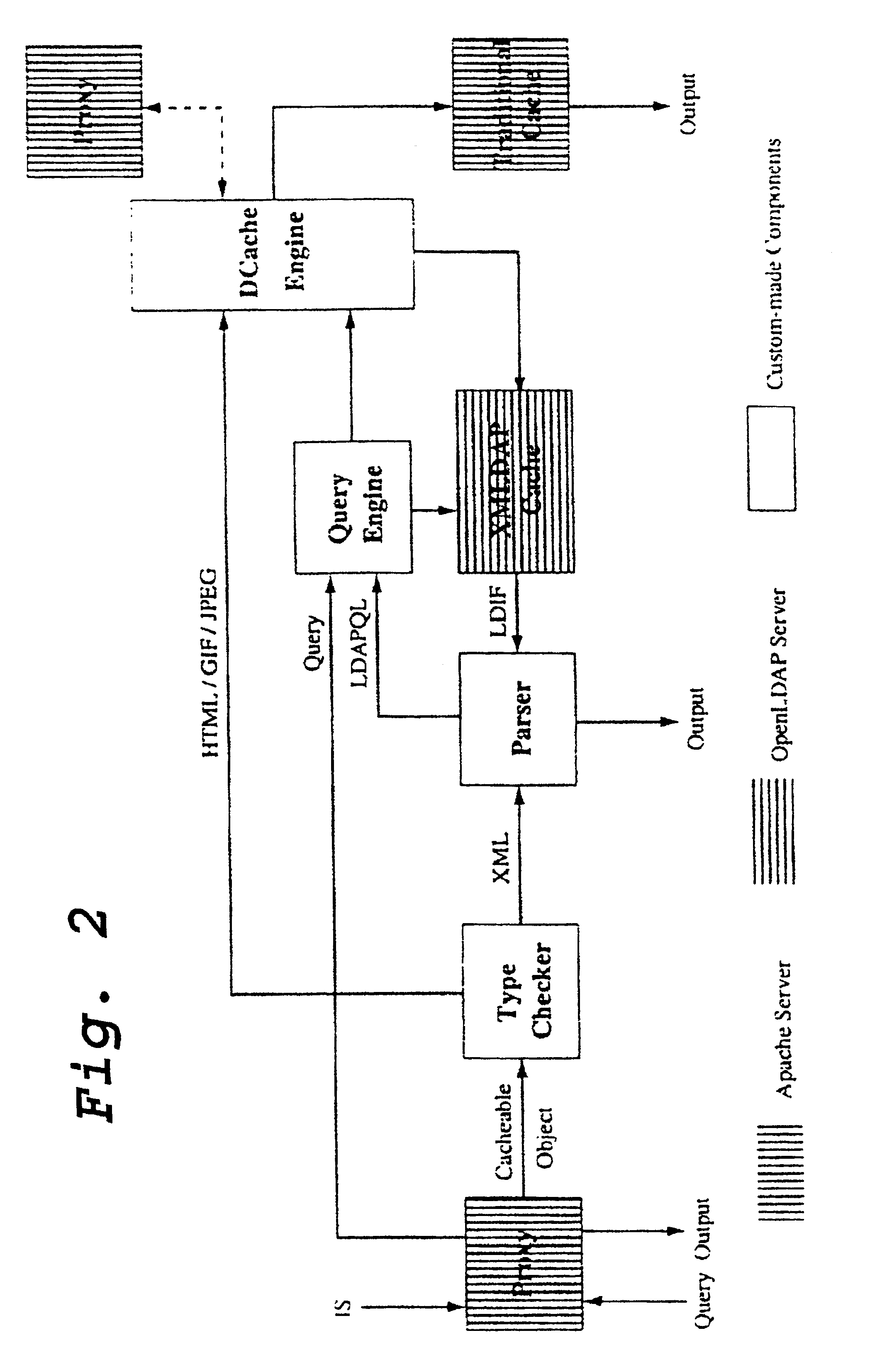LDAP-based distributed cache technology for XML
a distributed cache and distributed cache technology, applied in the field of ldap-based distributed cache technology for xml, can solve the problems of relational system limitations, nevertheless, and achieve the effects of improving search, reducing the number of errors, and improving search speed
- Summary
- Abstract
- Description
- Claims
- Application Information
AI Technical Summary
Benefits of technology
Problems solved by technology
Method used
Image
Examples
example
The LDAP Query
[0114]QL=(“cn=Cache,dc=top”,subtree, (oc=XMLQuery), {hash}) retrieves the hash attribute from all XMLQuery nodes under the cn=Cache,dc=top node, possibly to report the inventive own cache contents to other nodes in the system.
[0115]As specified in [James Clark and Steve DeRose. XML path language (XPath) version 1.0. www.w3c.org / tr / xpth November 1999], the primary purpose of the XPath standard is to address parts of an XML document, usually represented in the form of a tree that contains element, attribute and text nodes. An XPath Query Qx is formed by the concatenation of path expressions that perform walk-like operations on the document tree retrieving a set of nodes that conform to the requirements of the query. Each expression is joined with the next by means of the classical Unix Path character ‘ / ’.
[0116]Definition [XPath Query] An XPath Query QX is defined as:
[0117]QX=q0 / q1 / . . . / qn, where qi is an XPath subquery defined below, and ‘ / ’ the XPath subquery separat...
PUM
 Login to View More
Login to View More Abstract
Description
Claims
Application Information
 Login to View More
Login to View More - R&D
- Intellectual Property
- Life Sciences
- Materials
- Tech Scout
- Unparalleled Data Quality
- Higher Quality Content
- 60% Fewer Hallucinations
Browse by: Latest US Patents, China's latest patents, Technical Efficacy Thesaurus, Application Domain, Technology Topic, Popular Technical Reports.
© 2025 PatSnap. All rights reserved.Legal|Privacy policy|Modern Slavery Act Transparency Statement|Sitemap|About US| Contact US: help@patsnap.com



